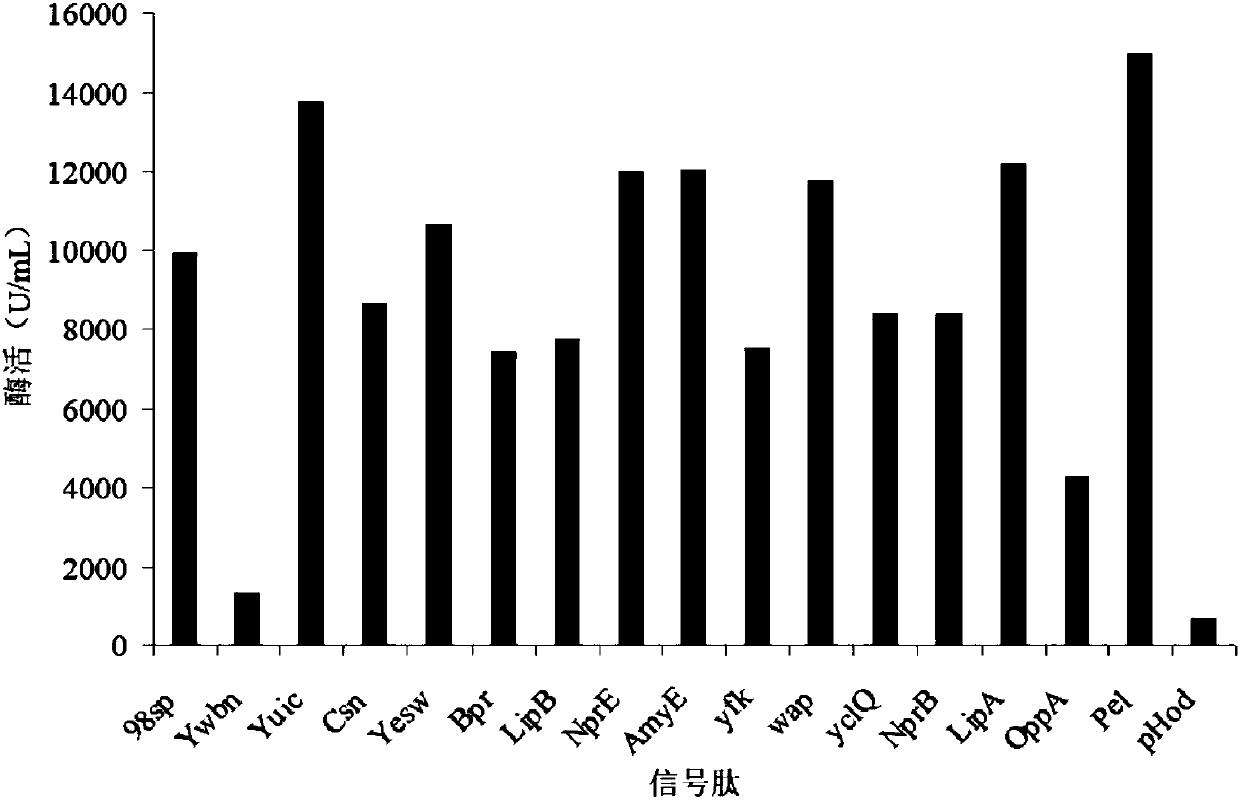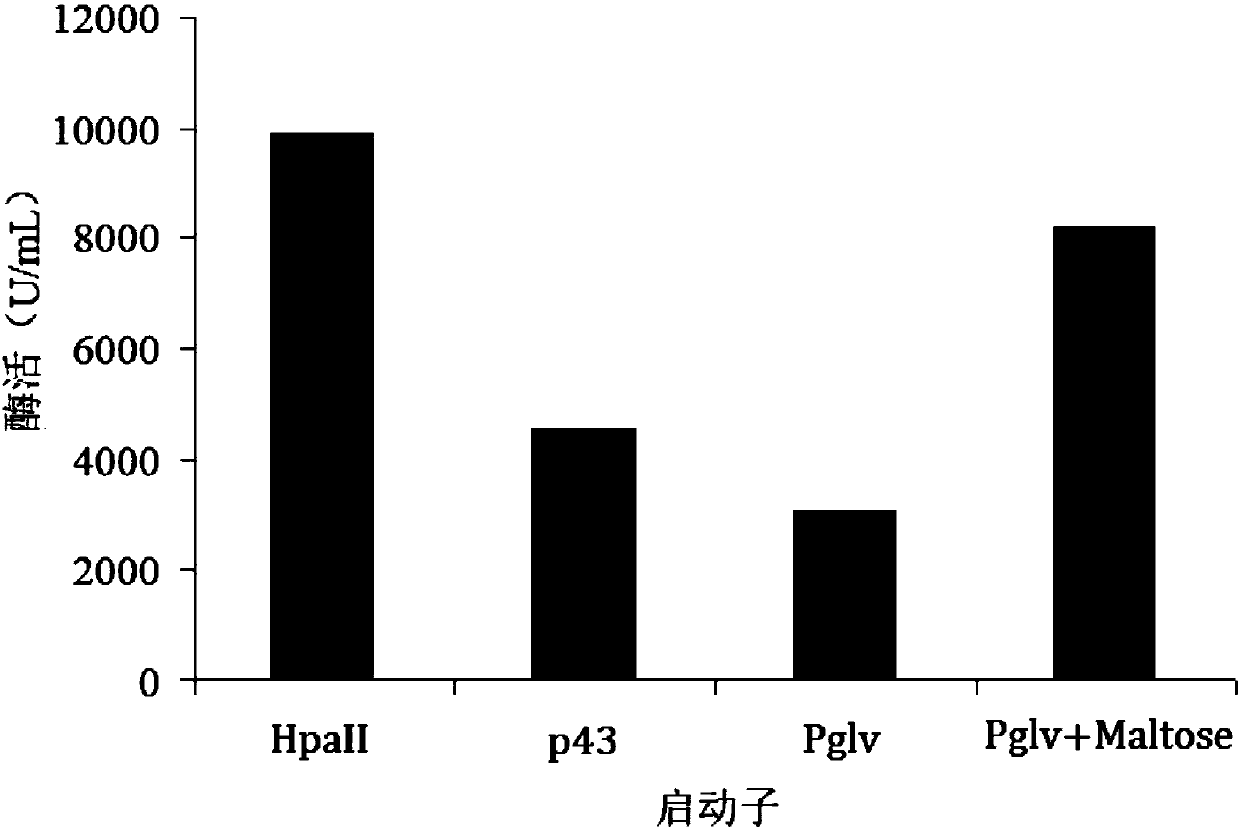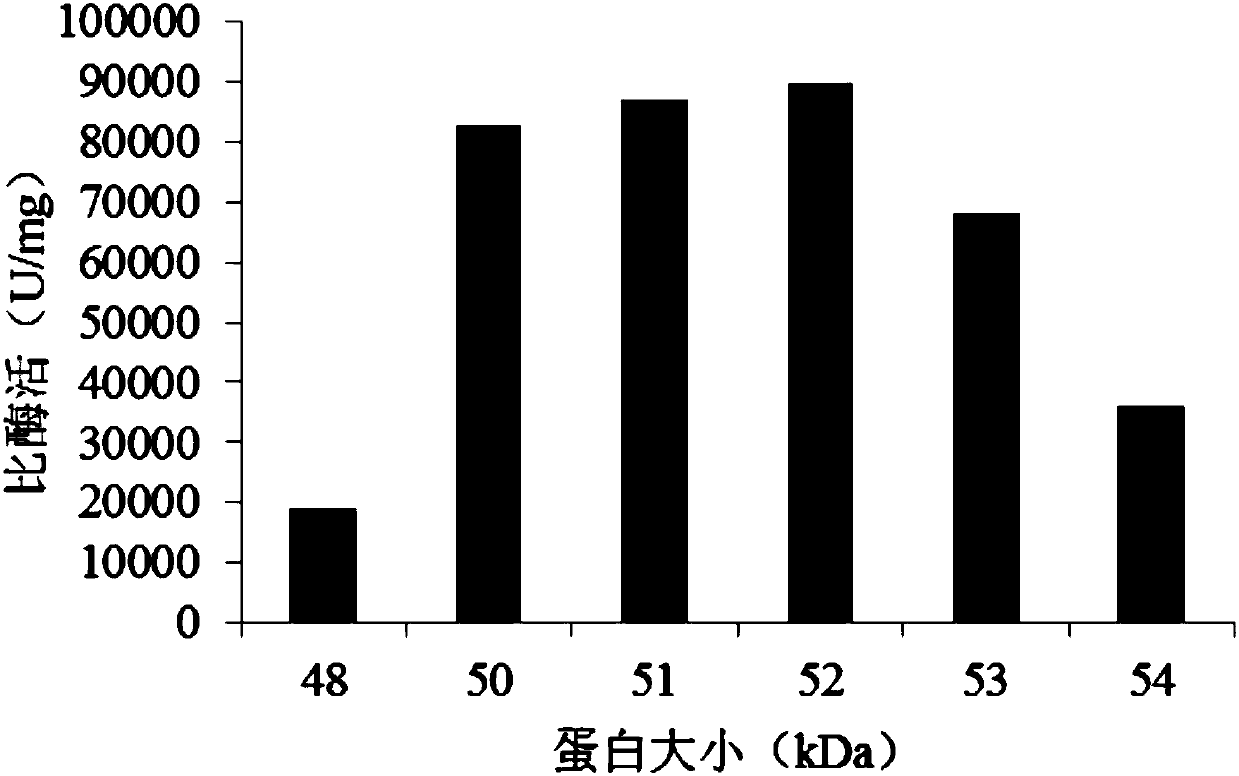Alginate lyase, host cells capable of secreting alginate lyase and application of alginate lyase and host cells
A technology of alginate lyase and host cells, which is applied in the field of host cells secreting alginate lyase and alginate lyase, which can solve the problems of large molecular weight of precursor protein, low enzyme activity and low expression of alginate lyase , to achieve the effect of wide application prospect and high safety
- Summary
- Abstract
- Description
- Claims
- Application Information
AI Technical Summary
Problems solved by technology
Method used
Image
Examples
Embodiment 1
[0069] Example 1 Construction of the first plasmid
[0070] (1) The upstream and downstream of the D-alanine racemase gene (dal) on the Bacillus subtilis 1A751 chromosome respectively select a 1000bp fragment as a homology arm, carry out PCR amplification, and connect two sections of homology arms by recombinant PCR, Obtain the dalU-dalD fragment of the knockout D-alanine racemase gene;
[0071] (2) Insert the lethal factor gene (mazF) of Escherichia coli behind the xylose promoter xylA' of the pAX01 vector, and obtain a fragment containing xylR-xylA'-macF-erm through PCR amplification;
[0072] (3) Insert the dalU-dalD fragment and the xylR-xylA'-macF-erm fragment into the multiple cloning site of the pUC19 plasmid to construct the first plasmid pUC-dalU-dalD to obtain the knockout D-alanine racemase gene -xylR-xylA'-macF-erm.
Embodiment 2
[0073] Example 2 Preparation of D-alanine racemase gene knockout strain
[0074] (1) transforming the first plasmid pUC-dalU-dalD-xylR-xylA'-macF-erm into Bacillus subtilis 1A751, and using erythromycin to select the bacterial strain in which the first plasmid is inserted into the chromosome;
[0075] (2) Use xylose as a growth pressure to screen secondary recombined plasmids and strains in which the dal gene has been knocked out. For strains that have not undergone secondary recombination, xylose is used as an inducer of the xylose promoter to induce the expression of macF, Lethal was performed to obtain D-alanine racemase gene knockout Bacillus subtilis 1A751-Δdal.
Embodiment 3
[0076] Example 3 Construction of the second plasmid
[0077] (1) PCR amplification obtains the D-alanine racemase gene of Bacillus subtilis 1A751 and its promoter fragment, utilizes this fragment to replace the kanamycin resistance gene on the Bacillus subtilis expression plasmid pMA5, obtains pMA5- dal plasmid;
[0078] (2) Gene fusion of the amplified alginate lyase gene and signal peptide gene was performed by overlapping PCR, and connected between NdeI and BamHI of the pMA5-dal plasmid to obtain the second plasmid pMA5-dal secreting alginate lyase -Aly.
PUM
 Login to View More
Login to View More Abstract
Description
Claims
Application Information
 Login to View More
Login to View More - R&D
- Intellectual Property
- Life Sciences
- Materials
- Tech Scout
- Unparalleled Data Quality
- Higher Quality Content
- 60% Fewer Hallucinations
Browse by: Latest US Patents, China's latest patents, Technical Efficacy Thesaurus, Application Domain, Technology Topic, Popular Technical Reports.
© 2025 PatSnap. All rights reserved.Legal|Privacy policy|Modern Slavery Act Transparency Statement|Sitemap|About US| Contact US: help@patsnap.com



